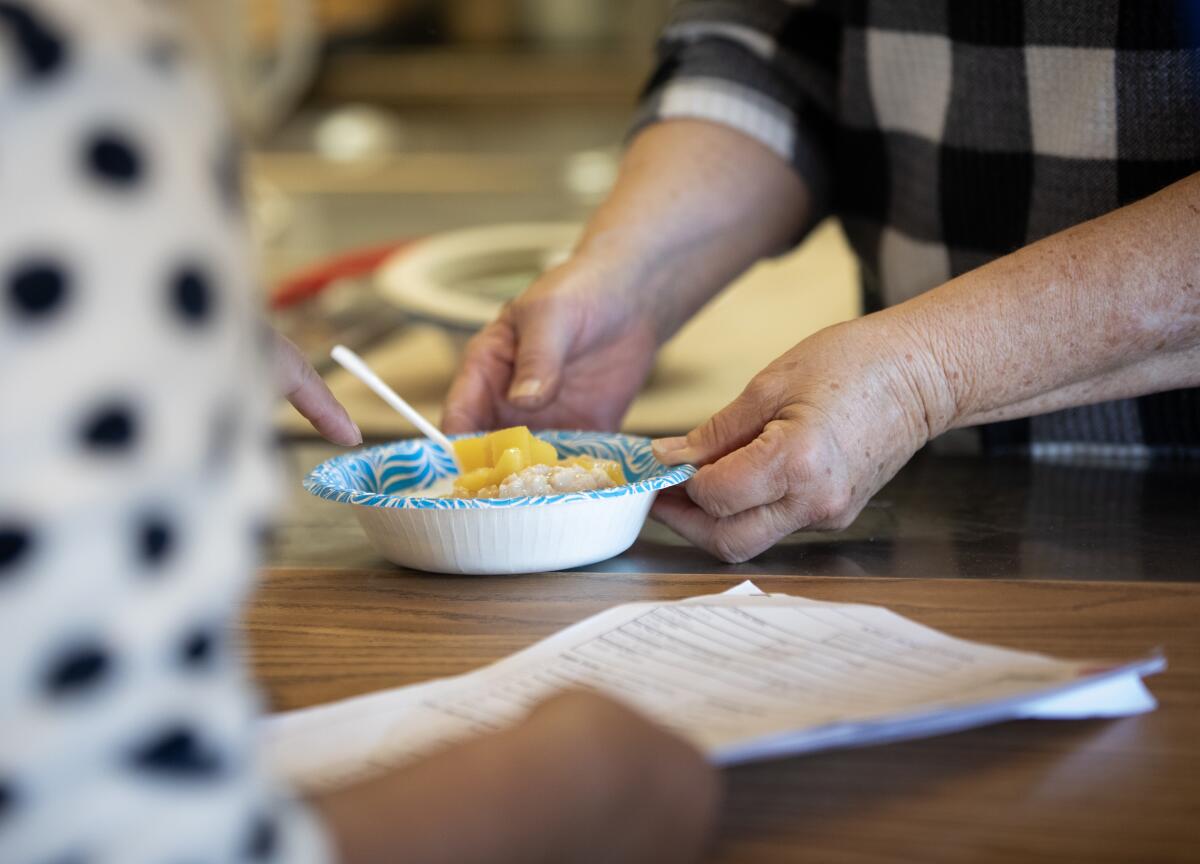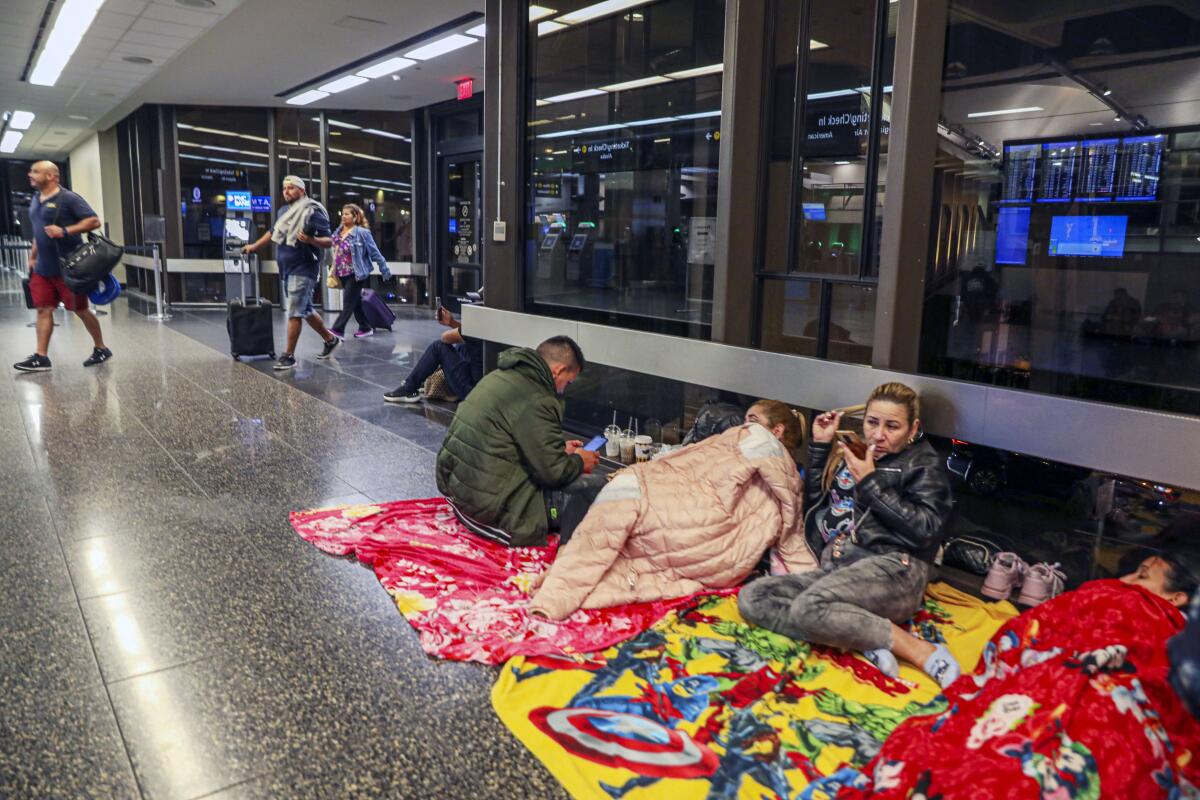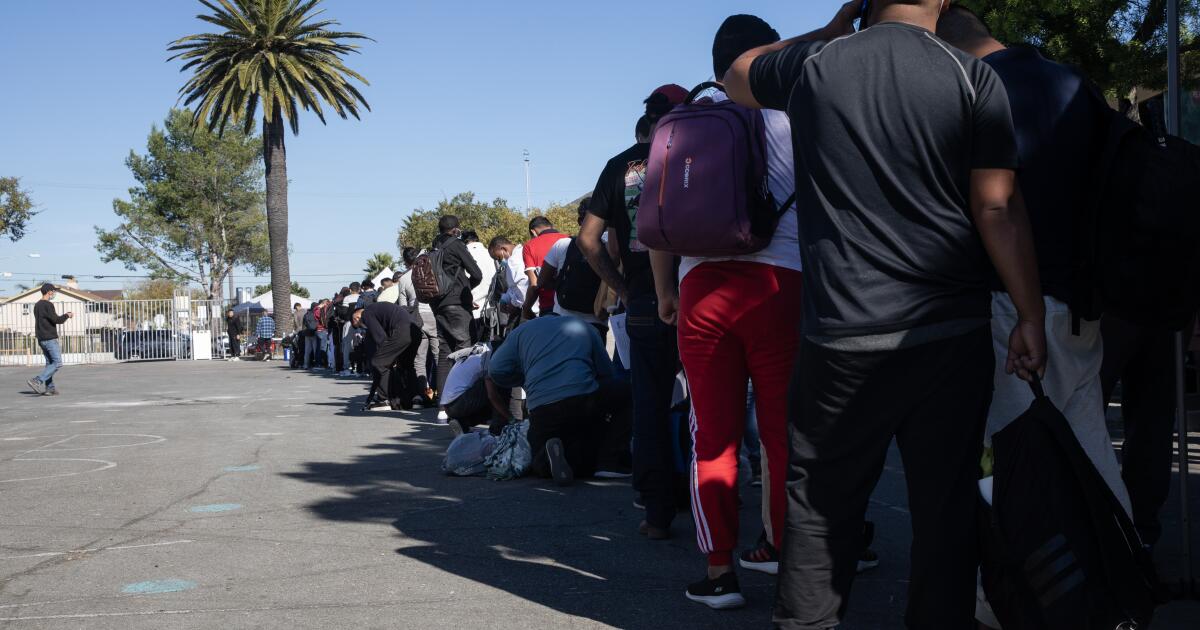[ad_1]
A temporary welcome center that for months has provided essential services to tens of thousands of arriving migrants could close Thursday, more than a month earlier than expected due to an apparent depletion of county funds.
“As the number of migrants arriving at the center has increased significantly over the last few weeks, our finite resources have been stretched to the limit,” Kathie Lembo, president and CEO of SBCS, the local nonprofit that runs the center, said in a statement.
San Diego County has so far allocated $6 million in funding to support the increasing number of migrants — many of them asylum seekers — who have been arriving at the U.S.-Mexico border and been released by Border Patrol into the community. Since September, county officials say nearly 100,000 migrants have arrived in the region.
But such funding was supposed to last until the end of next month.
The money made it possible to open a temporary center in an undisclosed location, offering much-needed services, such as transportation, food, or WiFi. Most of arriving migrants spend only a short time in the region before moving on to their final destinations.
“When we accepted the challenge of this work in October of last year, we knew two things: that it spoke to the heart of our mission, and that it was for a limited time,” Lembo said.
“We will continue working with the County and our partners in hopes of identifying additional resources to keep the center open, preventing hundreds of individuals a day from being stranded in San Diego without the support they need to continue their journey.”

Migrants are offered a meal at the center on Dec. 6, 2023.
(Ana Ramirez/The San Diego Union-Tribune)
The announcement, made Sunday, has left migrant support groups scrambling to figure out what aid might look like for arriving migrants, and if many more will end up on San Diego County’s streets and at transit centers come the end of the week.
“The problem here is that these funds were expected to last until the end of March, and since that’s not the case, it’s like a curve ball they’re throwing at us,” said Pedro Ríos, director of the American Friends Service Committee’s U.S.-Mexico border program.
“We have to figure out how to respond and how to make sure that people are not left without information or resources,” Ríos added.
Migrants arriving at the border often wait for hours in the open for the U.S. Border Patrol to pick them up for processing. Before the center’s opening, the federal agency typically then released them at public transit stations. Local organizations stepped up to assist, setting up temporary booths at transit stations to get the migrants on the next leg of their journey.
However, once the centralized welcome center opened, Border Patrol declined to bring migrants directly there, according to nonprofit leaders, and instead SBCS, formerly known as South Bay Community Services, picked up migrants in rented buses from the Border Patrol stations.
Some nonprofits that have provided services to migrants at the center have openly criticized the management of county funds, particularly what they described as insufficient spending on direct support such as shelter and food, while they say more than half of the money was budgeted for staff and transportation.
Ríos said street releases could happen again if the center is closed.
Many more migrants may also find their way to the San Diego International Airport to wait for flights out of the region — waits that can sometimes take days.

Migrants from Venezuela sit at the San Diego International Airport as they await their flight on Nov. 17, 2023. Many migrants sleep in the hallways for one night or more waiting for flights out of the region.
(Sandy Huffaker/For The San Diego Union-Tribune)
U.S. Customs and Border Protection, Border Patrol’s parent agency, did not immediately respond to questions about whether any effect on local operations was expected.
Border Patrol agents in the San Diego Sector encountered 24,709 migrants in January, compared to 34,372 in December, according to the latest data from CBP. However, officials said last month that a large decrease seen in such encounters across the entire southwest border in the first two weeks of January was typical for that time of year.
Earlier this month, the county Board of Supervisors voted to develop a long-term strategy that would include federal and state-funded transfer sites and respite shelters. The county’s interim chief administration officer is expected to present a plan to the board next month.
Board Chair Nora Vargas did not address the situation Monday. Her office said a statement would be coming Tuesday.

Migrants wait to receive services at the welcome center on Dec. 6.
(Ana Ramirez/The San Diego Union-Tribune)
Supervisor Jim Desmond said the federal government needs to intervene.
“This failure lies squarely at the feet of the federal government. We were initially receiving 300-400 migrants a day, but now we’re seeing 800-900. As more money was spent, the number of migrants has increased,” he said in a statement Monday.
“We are already grappling with a severe homelessness problem, and the influx of thousands of individuals onto our streets will only exacerbate this crisis.”
Desmond and Supervisor Joel Anderson, the two Republicans on the Board, also used the moment to renew calls to “close” the U.S.-Mexico border. Last week, Anderson sent a letter to President Joe Biden urging him to “take immediate steps to close the international border and to take the action necessary to address this ongoing humanitarian crisis.”
Ríos said local organizations are discussing the development of an emergency response plan.
“The will is there,” he said. “But we do not know if the resources are there.”

Migrants from Colombia — Vanessa, back left, Valeria, Yesica, Leidy and Jorge — receive hand warmers and sandwiches from Karen Parker, a volunteer, left, on Feb. 8 in Jacumba Hot Springs. They took shelter in a makeshift tent there after crossing the U.S.-Mexico border nearby to wait for Border Patrol to pick them up for processing.
(Ana Ramirez/The San Diego Union-Tribune)
[ad_2]


Leave a Reply
You must be logged in to post a comment.